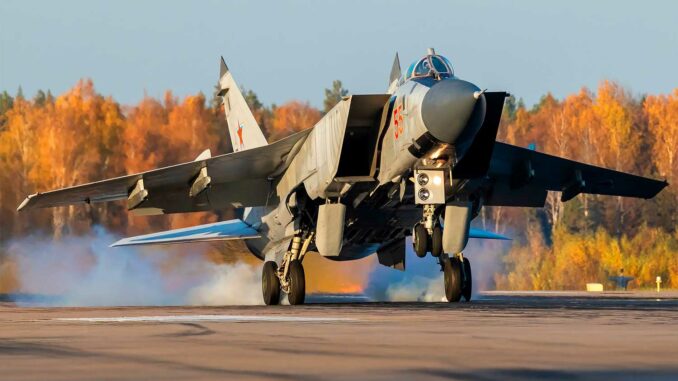
Detailed inventory of Russian fighter jets: capabilities, weaponry, performance, strategic issues, and models used by Russia.
Russia maintains one of the largest and most diverse air forces in the world. As the direct heir to the Soviet arsenal, its combat aviation relies on a range of aircraft from models designed in the 1980s to recently introduced fifth-generation fighters. Each Russian fighter jet fulfills a specific role, whether it be air superiority, tactical support, interception, or armed reconnaissance. Unlike more centralized Western doctrines, Russia maintains a heterogeneous approach, valuing both modernized aircraft from the past and ambitious technological projects.
In 2024, the Russian Aerospace Forces (VKS) will have more than 1,200 active combat aircraft, according to data from SIPRI and the Russian Ministry of Defense. This fleet includes heavy fighters such as the Su-35S, long-range interceptors such as the MiG-31BM, and the Su-57, Russia’s main hope in the stealth fighter category. The use of such a wide variety of aircraft is due to technical, economic, and geopolitical considerations: it is as much a matter of maintaining projection capability as it is of responding to the wear and tear of older platforms in the context of active conflicts, such as in Ukraine.
This article examines the main fighter aircraft used by Russia, analyzing their role, technical characteristics, armament, and the industrial and strategic issues associated with their use.
The Sukhoi Su-35S: pillar of Russian air superiority
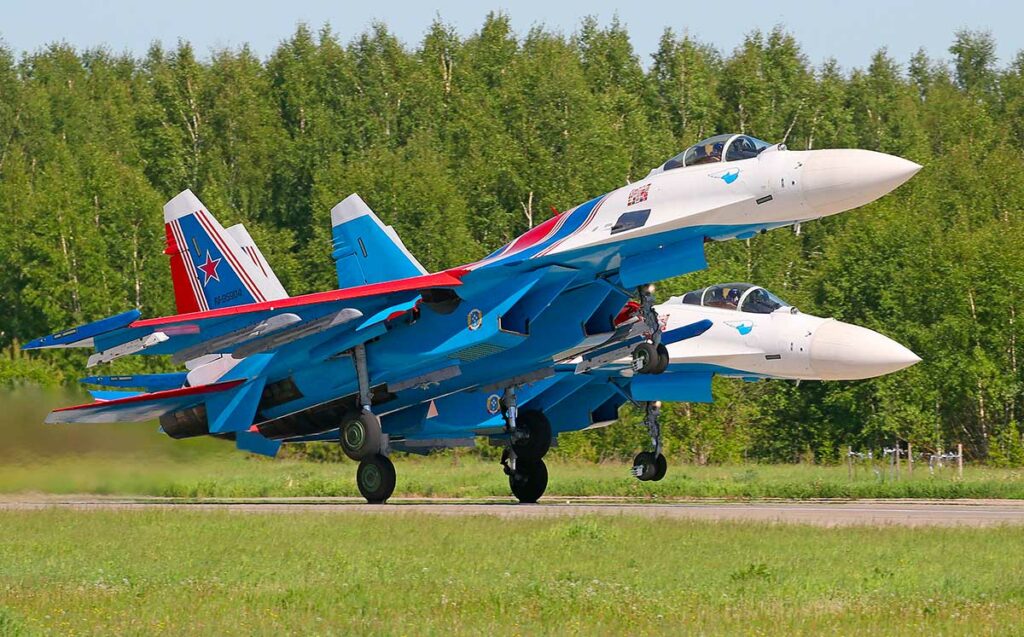
The Su-35S is currently the Russian Air Force’s standard heavy multirole fighter. An advanced evolution of the Su-27, it features a reinforced airframe, a modernized cockpit and, above all, a latest-generation electronic suite.
The Su-35S is powered by two Saturn AL-41F1S turbojet engines with swivel nozzles, giving it thrust vectoring and therefore increased maneuverability. It can reach a maximum speed of Mach 2.25 (approximately 2,400 km/h) at high altitude, with an operational ceiling of over 18,000 meters. Its combat radius is around 1,600 km without refueling.
The aircraft is equipped with the Irbis-E passive electronic scanning radar, capable of detecting a stealth fighter at approximately 90 km and a conventional target at over 300 km. It can engage up to 8 air targets simultaneously.
The Su-35S carries a wide range of weapons: R-77-1 long-range air-to-air missiles, R-73 infrared-guided missiles, and air-to-ground weapons such as KAB-500 guided bombs and Kh-31P anti-radar missiles. Its payload capacity exceeds 8 tons.
Although not stealthy, the Su-35S remains a formidable platform thanks to its agility, radar range, and robustness in hostile environments. It is estimated that around 120 units will be in active service in 2024, mainly in the western and central military districts.
The Mikoyan MiG-31BM: long-range strategic interceptor
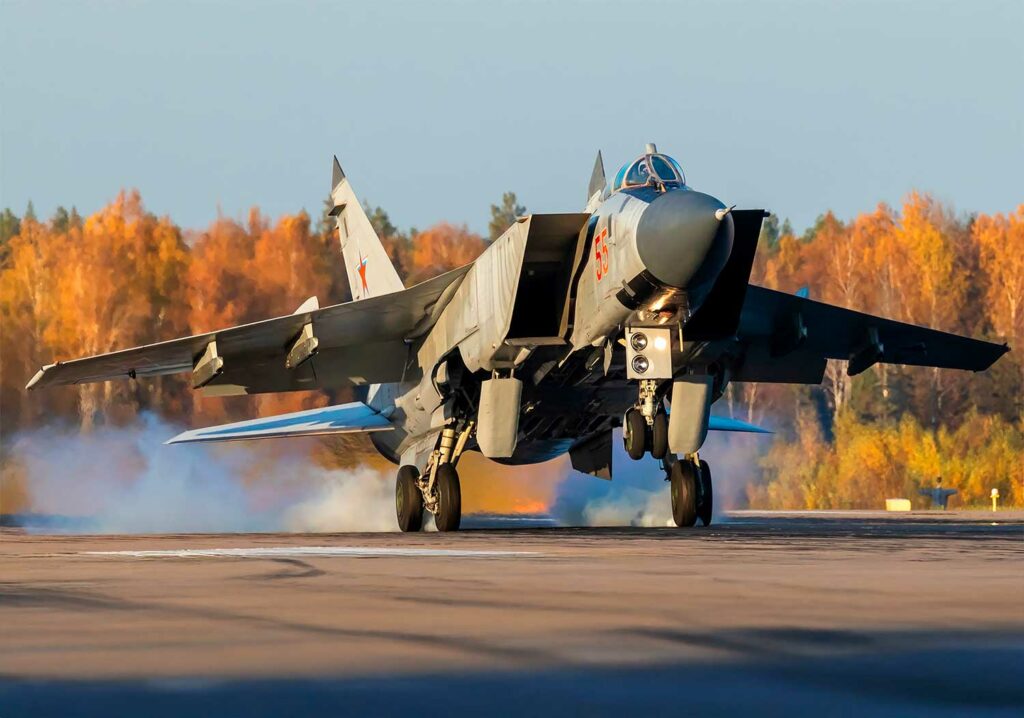
The MiG-31BM, a modernized version of the MiG-31, fulfills a very specific mission in Russian air defense: very long-range interception. Originally designed in the 1970s, it remains the only Russian fighter aircraft capable of operating effectively in the Arctic thanks to its freeze-resistant engines and long range.
The MiG-31BM can reach Mach 2.83 (over 3,000 km/h) and fly at altitudes of up to 20,600 meters. It is equipped with a passive electronically scanned Zaslon-M radar, capable of tracking 24 targets and engaging six simultaneously, with a detection range of 320 to 400 km.
It is often used in combination with ground-to-air systems to create a deep defense. Its modernization includes tactical data links, a digital cockpit, and the integration of the Kh-47M2 Kinzhal hypersonic missile, capable of reaching Mach 10 with a range of 2,000 km.
More than 100 MiG-31s have been upgraded to the BM version, and around 50 are expected to be capable of carrying the Kinzhal by 2024. These interceptors are crucial to Russia’s non-strategic nuclear deterrent.
The Sukhoi Su-34: tactical combat aircraft for ground support
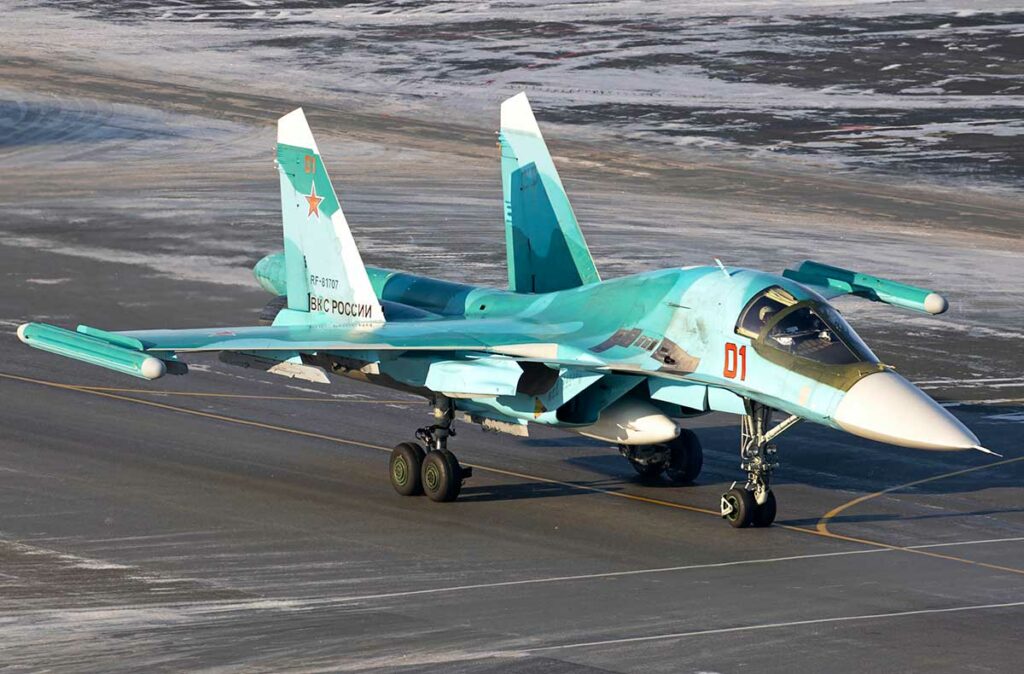
The Su-34 is a long-range tactical bomber derived from the Su-27. Its main mission is high-precision ground attack, including in contested environments. It is distinguished by its side-by-side cockpit, a rarity among fighter aircraft.
It is powered by two AL-31FM1 turbojet engines, enabling it to reach Mach 1.8 (approximately 1,900 km/h) with an operational range of 1,100 km when fully loaded. It can carry up to 12 tons of ammunition on 12 hardpoints.
The Su-34 is equipped with Leninets V004 radar, a sophisticated electronic warfare system, and active countermeasures. It uses precision munitions such as KAB-1500 guided bombs and Kh-29 missiles, as well as unguided rockets for area support.
More than 140 units are in service, largely deployed in Ukraine, Syria, and the Russian Far East. The Su-34 illustrates Russia’s desire to have a heavily armed multirole fighter aircraft for deep strikes without relying exclusively on strategic aviation.
The Sukhoi Su-57: betting on stealth and advanced technologies
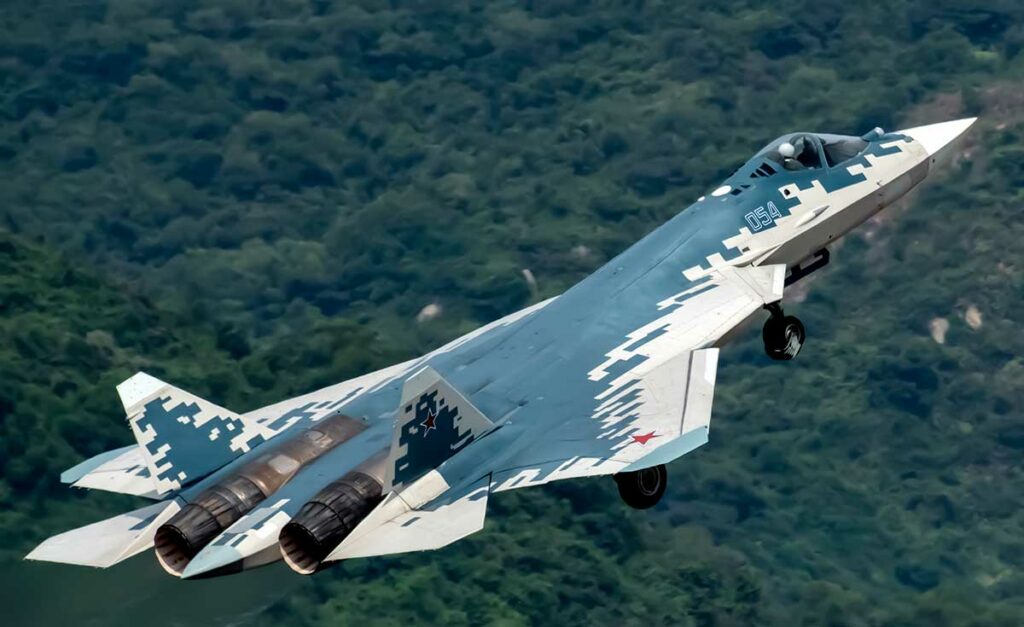
The Su-57 (T-50) is the first Russian fifth-generation fighter to enter service. It is designed to compete with American stealth aircraft (F-22, F-35), but its development has been marked by technical and budgetary delays.
The Su-57 incorporates composite materials, a stealth design (low radar signature) and latest-generation avionics. It is equipped with an N036 Byelka active electronically scanned array (AESA) radar, infrared sensors (IRST) and an advanced data link system.
Its supersonic cruising speed is estimated at Mach 1.6 (approximately 1,700 km/h) without afterburner, and it can fly at altitudes of over 20,000 meters. It carries new-generation air-to-air missiles (R-77M, R-74M2) and stealth air-to-ground munitions in internal bays.
Despite these ambitions, the fleet remains limited: around 20 units have been delivered, out of a theoretical order of 76 aircraft by 2028. The lack of a fifth-generation engine (Izdeliye 30) in series production further limits its potential.
The Mikoyan MiG-29 and its derivatives: a platform still in active service
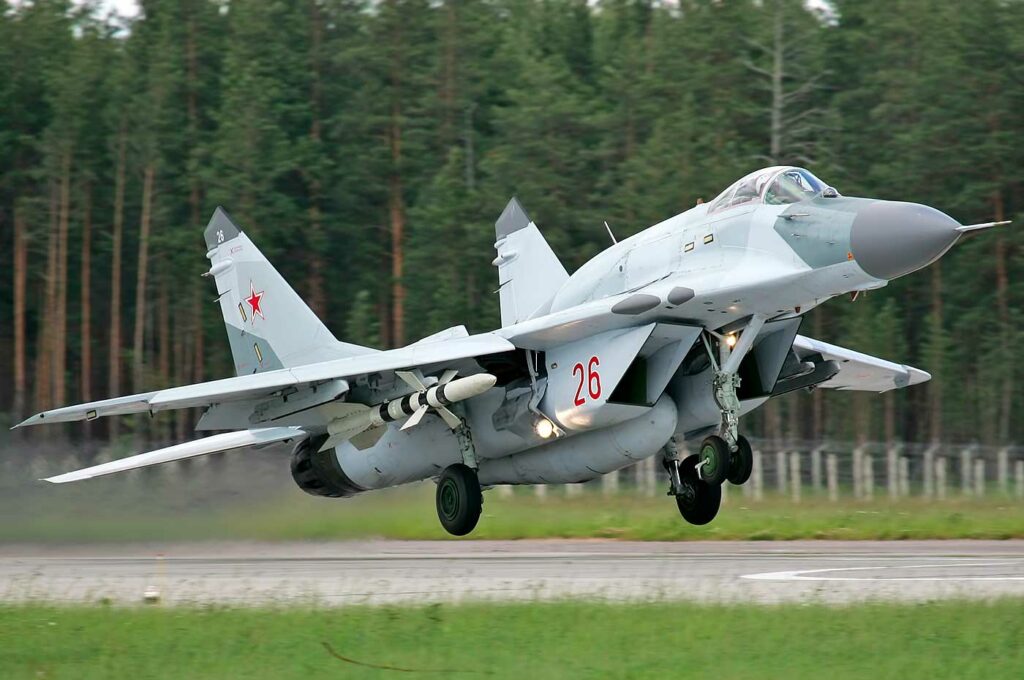
The MiG-29, introduced in the 1980s, remains in service in several regiments, although it is gradually being replaced. Lightweight, agile, and economical to operate, it continues to be used for local air defense and training missions.
Its modernized versions, such as the MiG-29SMT and MiG-29UB, include additional fuel tanks, a digital cockpit, a Zhuk-ME radar, and increased guided weapon carrying capacity.
The MiG-29 is still capable of flying at Mach 2.25 (approximately 2,400 km/h) and climbing to 18,000 meters, with a range of 1,500 km. Although obsolete in the face of contemporary threats, it remains useful in local air superiority contexts or as a transition platform.
Russia still has around 200 MiG-29s in service in various stages of modernization.
A mixed fleet combining heritage and innovation
The current composition of Russian fighter aviation is based on a balance between modernized proven models (MiG-29, Su-27, MiG-31) and new high-tech aircraft (Su-35S, Su-57). This strategy stems as much from industrial constraints as from operational pragmatism.
The partial dependence on older fighter aircraft raises the question of capacity renewal, at a time when Russia is facing growing logistical pressure due to sanctions, losses in Ukraine, and the slowdown in the production of certain electronic components.
The Su-75 “Checkmate” program, announced as a light stealth fighter for export and complementary to the Su-57, illustrates the ambitions of a segment that is not yet consolidated. However, no operational prototype has yet been delivered.
War Wings Daily is an independant magazine.